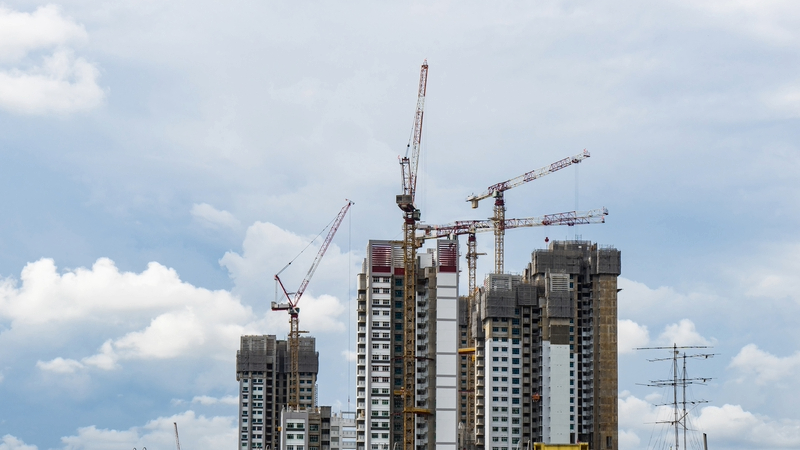Tom Weld and Kayla Urbanski give a detailed overview of the Building Safety Regulator function under the new building safety regime.

The new building safety regime introduced by the Building Safety Act 2022 (BSA) requires a seismic change in the way that the construction industry approaches the design and construction of higher-risk buildings (HRBs) and the management of building safety risks.
The regime is intended to promote improved competence and collaboration within the construction industry to avoid the repetition of the historic procurement deficiencies that ultimately resulted in the Grenfell Tower fire tragedy.
The regime will be overseen and enforced by a new independent regulator, the Building Safety Regulator (BSR), an offshoot of the Health and Safety Executive.
With the final aspects of the new building safety regime coming into force in October 2023, it is timely to review the role of the BSR and the issues that those involved in the procurement of HRBs should be aware of to avoid falling foul of the new rules.
BSR responsibilities and approach
The BSR has three primary responsibilities: to oversee the safety and standard of all buildings; to assist the construction industry and Building Control professions to boost competence; and lead the implementation of the new building safety regime.
The BSR will operate multi-disciplinary teams, including registered building inspectors and other specialists, to ensure appropriate resources are allocated, taking into account the complexities of any development and the range of disciplines required.
Planning
The BSA established a three-stage gateway regime for the design and construction of HRBs. Gateway One (Planning) requires that the BSR is consulted on building safety risks on any planning application for the development of an HRB.
Gateway One came into force on 1 August 2021 and, in the first year of operation, the fire safety strategy submitted in support of 56% of applications required amendment and resubmission.
This suggests that the construction industry is still not devoting adequate consideration to safety risks in the initial design of an HRB and that more thought must be given to key issues – including means of escape, access for emergency services and inhibiting the spread of fire – to ensure building safety and avoid costly redesigns and delays.
Detailed design and construction
From October 2023, save for projects subject to the transitional arrangements, the BSR will become the only Building Control body for HRBs and will be responsible for issuing Building Control approval in respect of the detailed design of an HRB (Gateway Two), inspecting the works and issuing a completion certificate (Gateway Three). In respect of Gateways Two and Three, it is important to note:
- Pending the BSR’s approval of a building control application, Gateway Two represents a hard stop on construction of an HRB. This means that while enabling works (such as site set-up, demolition of existing structures, excavation of trial holes, etc) are permitted, no permanent works can be carried out.
- If, following receipt of Building Control approval, a significant change to the design impacting the building safety strategy is required, an application will need to be made to the BSR for approval, and the change can only be implemented on receipt of the BSR’s approval. As such, evolutions in the design during the construction phase should be avoided where possible to prevent delays and it is vital that construction teams operate a robust change control process to monitor, record and consider the implications of any proposed change before such changes are implemented.
- The BSR will inspect key work stages during the construction phase and, on completion, will carry out final inspections of the works. An application will need to be made to the BSR for a completion certificate and will need to be supported by sufficient information to demonstrate that the building conforms to the approved design and satisfies all applicable functional requirements. Confirmation that golden thread information has been passed to the relevant accountable person is also essential. It is important to note that an HRB cannot legally be occupied until the completion certificate is received from the BSR.
Competence
The BSR has been provided with a range of assessment and enforcement powers to ensure that those participating in the design and construction of buildings (not just HRBs) are competent and can be held to account.
It is therefore vital that all those involved in the development of HRBs take steps to upskill their workforce and to demonstrate that they have the organisational capability and competence to adequately perform their roles.
BSR funding
The BSR is empowered to recover the costs of discharging its functions via fees and charges. While final details of such fees and charges are awaited, it is important to note that these will represent an additional cost in the development of HRBs and will need to be factored into any calculation considering the financial viability of a project.
Construction must adapt quickly
That the new measures introduced by the BSA to improve building safety are absolutely right is not in dispute. However, the construction industry will need to rapidly adapt to avoid falling foul of the new regime and incurring unnecessary costs and delays.
This will involve making significant changes to the way the industry approaches the development of HRBs and the upskilling of those involved so that they fully understand their responsibilities and the requirements in relation to the BSR.
Tom Weld is director and Kayla Urbanski solicitor in the construction and engineering team at independent UK law firm Burges Salmon.











